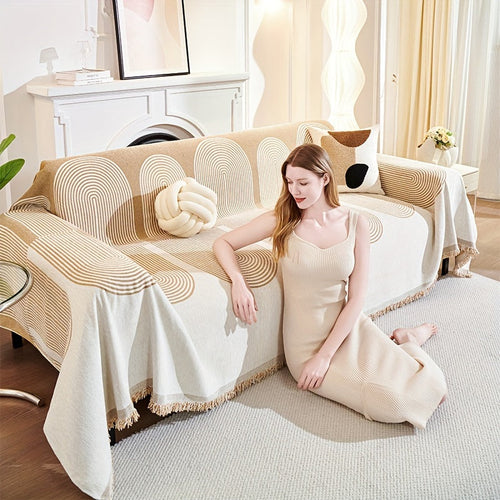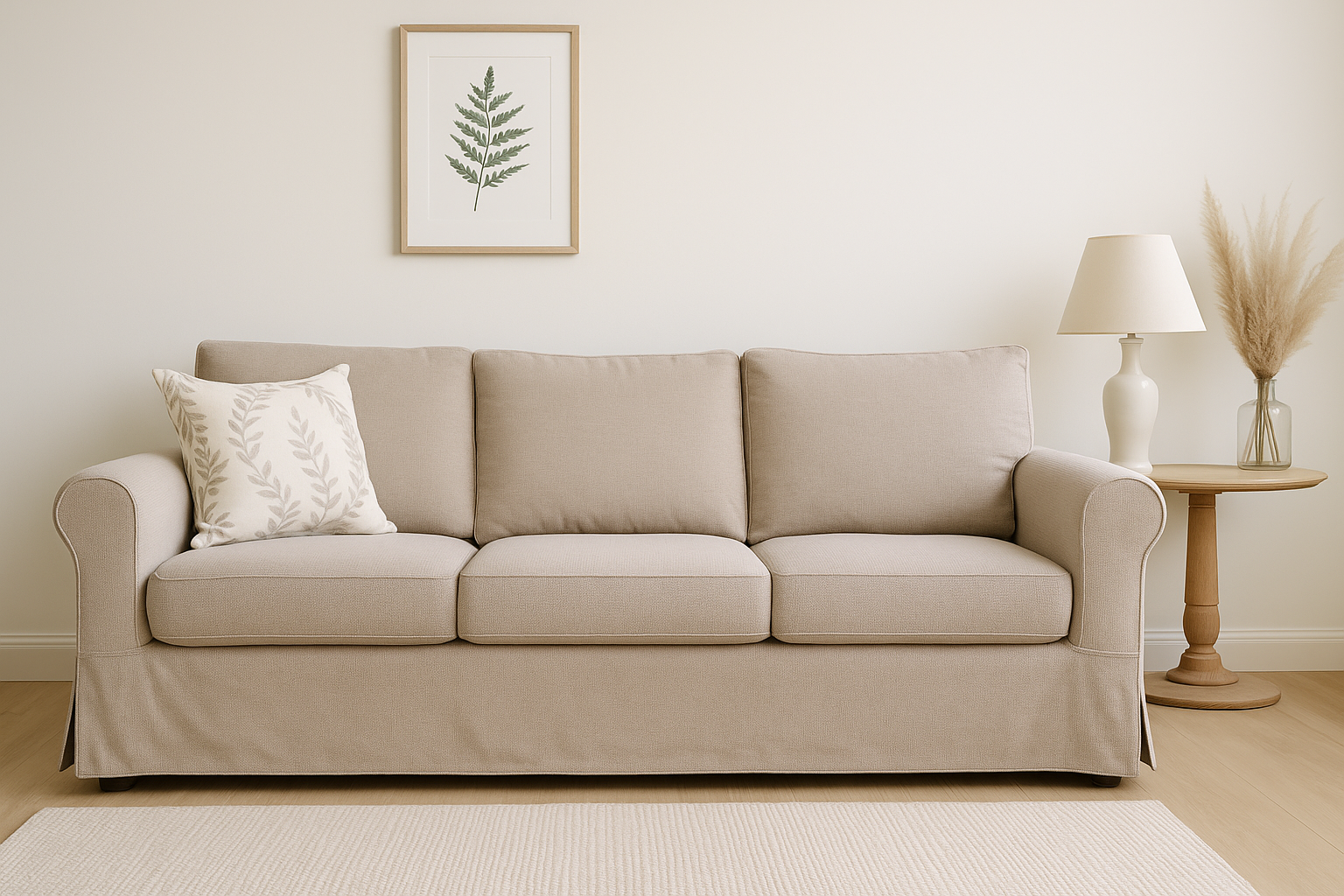Why Small Spaces Need Intentional Design
Many UK homes, especially in urban areas, come with limited living space. But a smaller footprint doesn't mean you have to sacrifice comfort or design. With thoughtful choices, you can make even the smallest lounge feel open, functional, and welcoming. It's not about adding more — it’s about using what you have, better.
Use Light, Neutral Colours to Open the Room
Colour plays a crucial role in visual space. Lighter tones reflect natural light and give the impression of openness. For walls, consider soft white, pale grey, or warm beige. Match your sofa cover in similar hues — stone, oat, ivory — to blend the largest piece of furniture into the background.
Avoid bold or heavy colours on dominant surfaces unless you have strong natural light. Lighter, washable sofa covers not only lift the space but also make cleaning and seasonal changes easy.
Choose a Sofa That Fits the Room — Not Fills It
Oversized sofas in small rooms can overwhelm. Instead, choose a streamlined design with slim arms and legs that expose more floor space underneath.
L-shaped or modular sofas work well if placed along the wall or tucked into a corner. Use a stretch-fit sofa cover to create uniformity across different shapes and sizes. This not only improves aesthetics but helps mismatched furniture feel intentional.
Maximise Natural Light and Mirror Its Effect
Make the most of natural light by keeping window dressings minimal. Use sheer curtains or light-filtering blinds that don’t block the view. Add a mirror opposite your main window to reflect light and create the illusion of more depth.
Position your sofa near the window without blocking it. A light-coloured sofa cover will catch and reflect daylight, making the space feel even brighter.
Keep the Floor Clear and Furniture Legs Visible
The more floor you can see, the larger a space will feel. Use raised furniture — like coffee tables, chairs, and sofas with exposed legs — to allow light and sightlines to flow underneath.
Avoid bulky media units or storage that sits flat on the floor. Slimline shelving or wall-mounted solutions keep things practical without adding clutter. Pair with lightweight furniture styling, like ribbed or linen-look sofa covers that keep the room breathable and soft.
Use Vertical Styling to Draw the Eye Upward
In smaller rooms, maximise height. Tall bookshelves, vertical wall art, or plants with long stems can lead the eye upward and make ceilings feel taller.
You can also layer this effect through textiles — a throw draped down the side of a sofa or vertical-texture sofa covers enhance that upward flow subtly.
Multifunctional Furniture Adds Space Without Bulk
Smart storage is essential in small living rooms. Choose ottomans with hidden compartments, nesting tables, or slim benches that double as seating.
When styling these items, keep fabric tones consistent. A matching sofa cover and throw on a nearby ottoman will tie the space together, giving the illusion of flow and openness.
Stick to One Dominant Colour Scheme
Clashing or mismatched tones can fragment a small space. Keep your palette simple — choose one base colour and two accents for cushions, throws, and decor.
Sofa covers are a great anchor point. Pick a tone that complements your wall and flooring, then add texture and colour through accessories. This creates calm and visual balance.
Final Thoughts
You don’t need more square footage to enjoy a beautiful, functional living room. By choosing the right colours, maintaining visual flow, and making your sofa work harder for the space, you can dramatically increase how large and welcoming your room feels.
At Sofa Decor UK, we offer a range of stretch-fit, washable sofa covers designed specifically for modern British homes — including smaller spaces.
Call to Action:
Shop Light & Space-Saving Sofa Covers →



0 comments